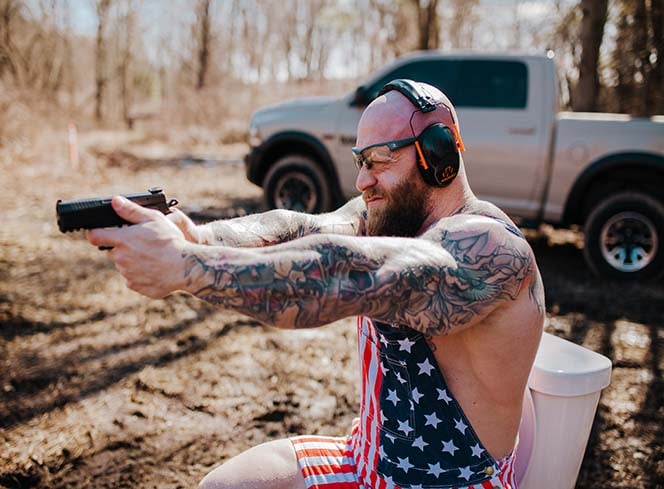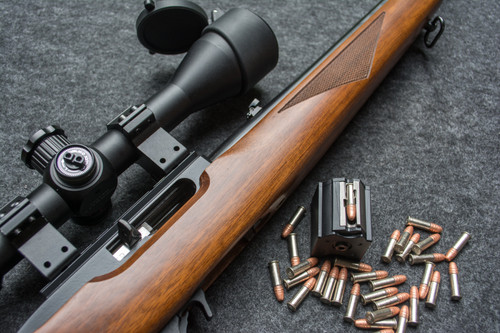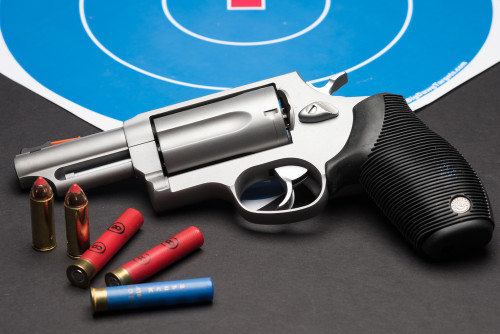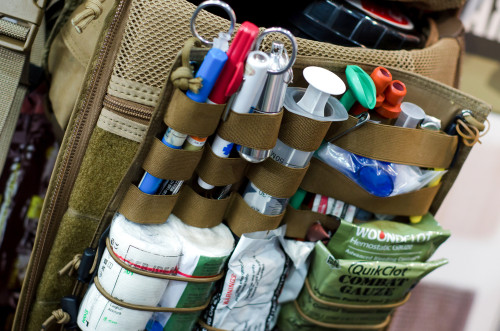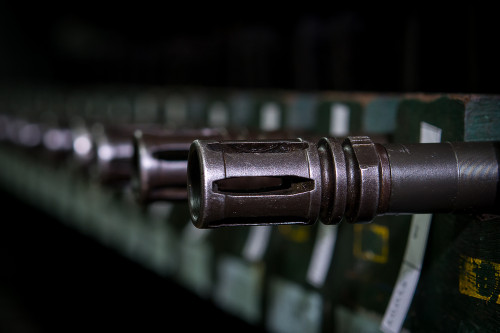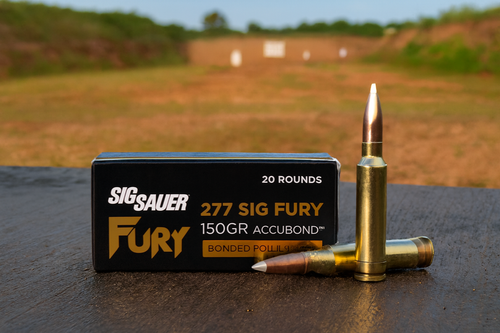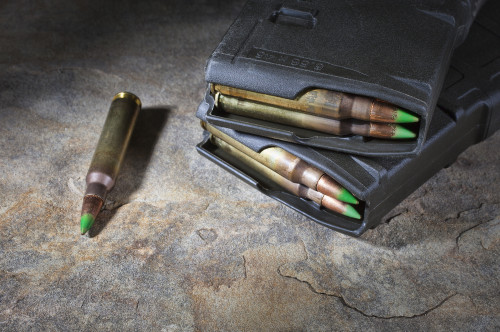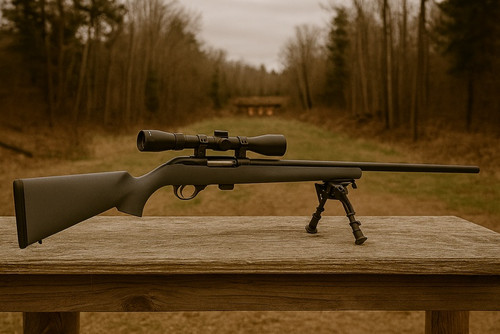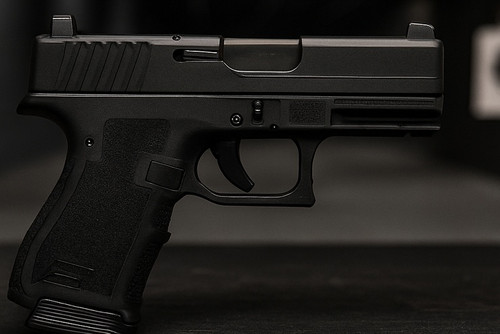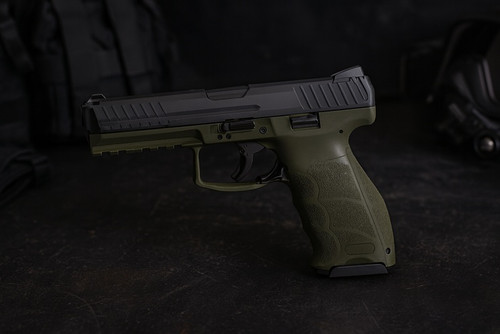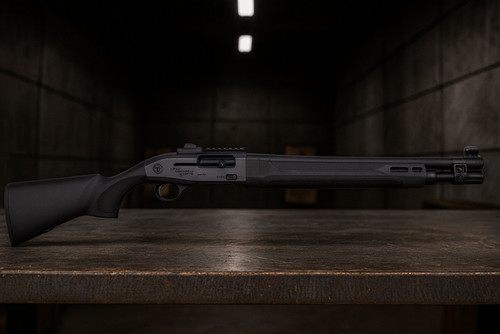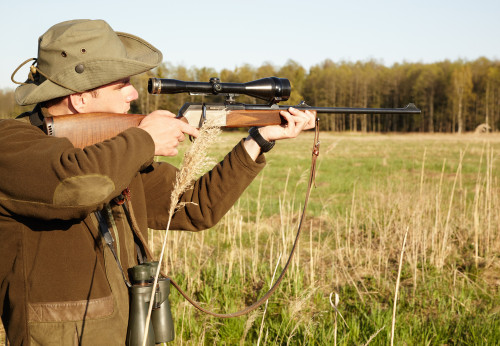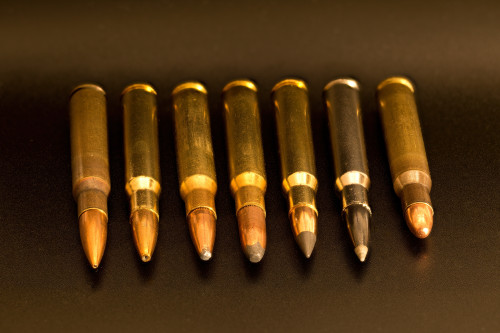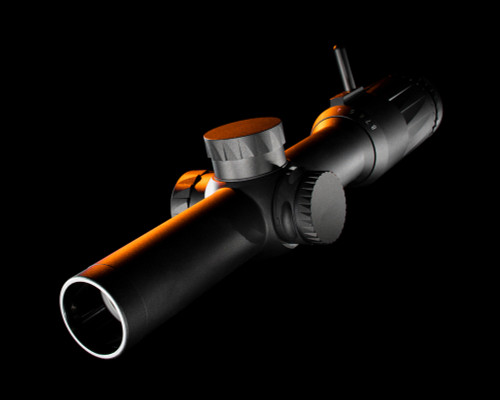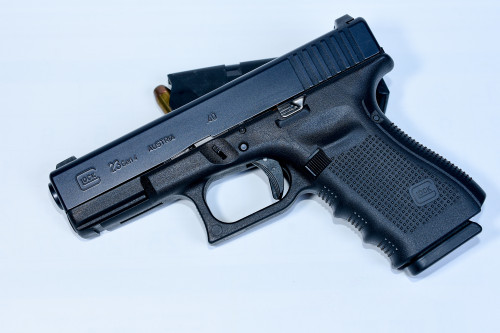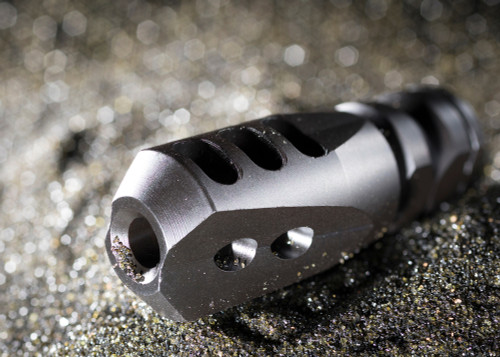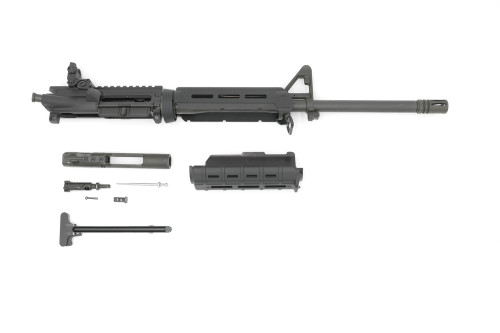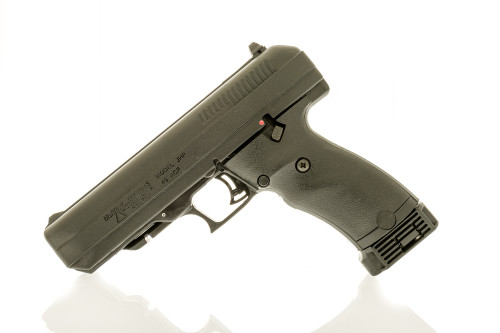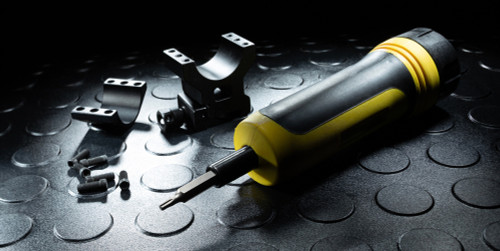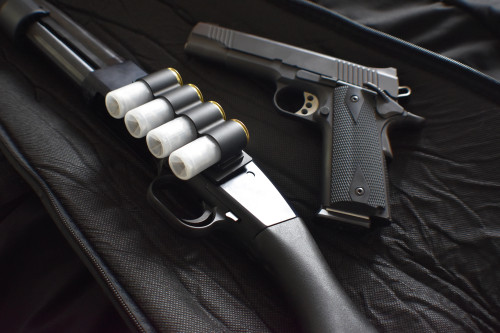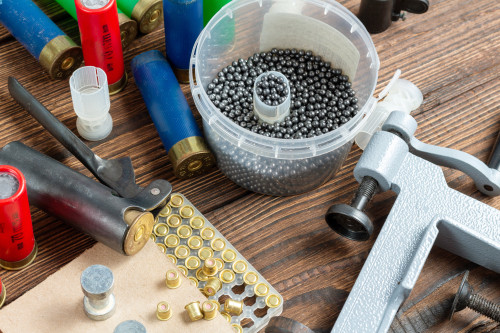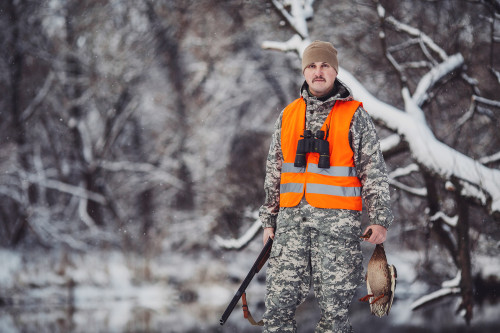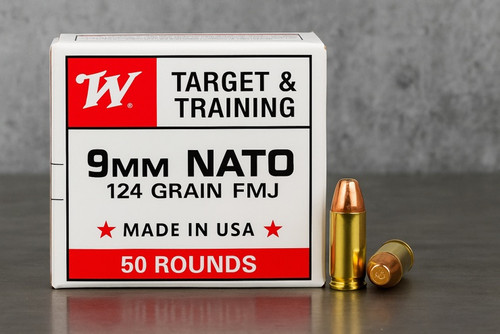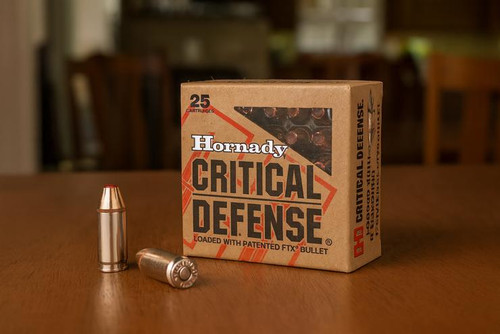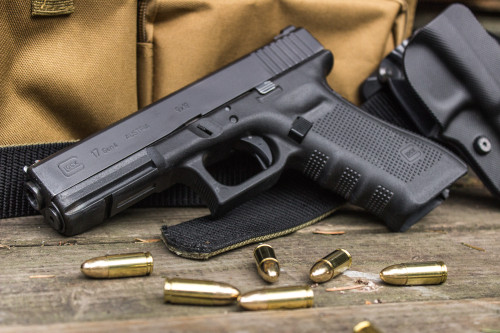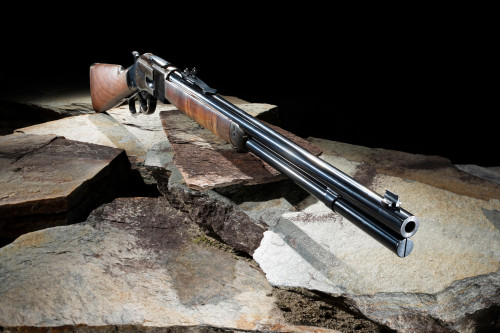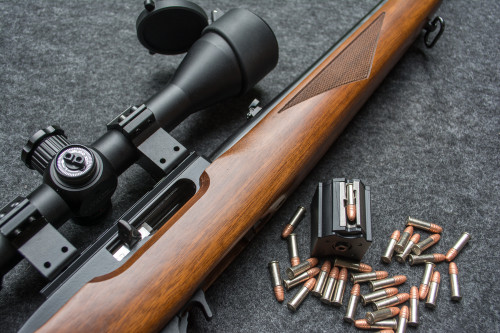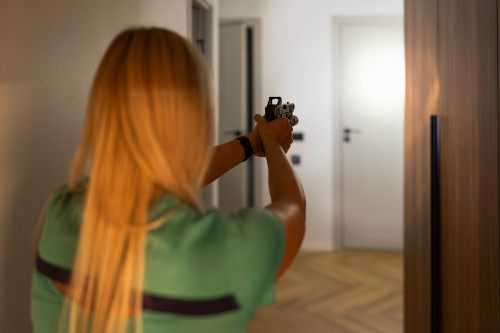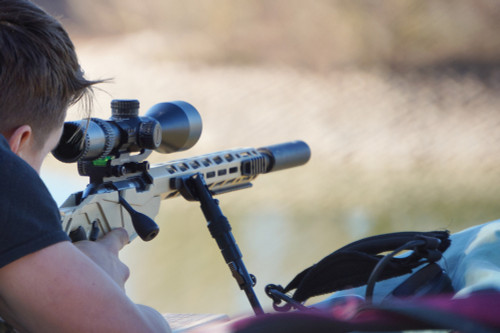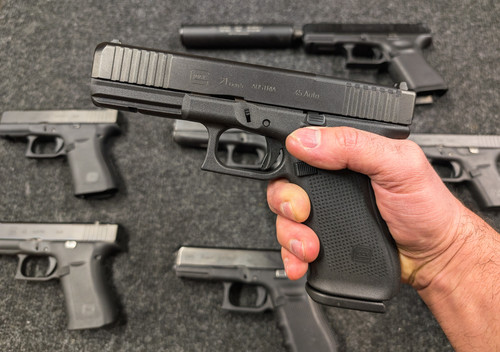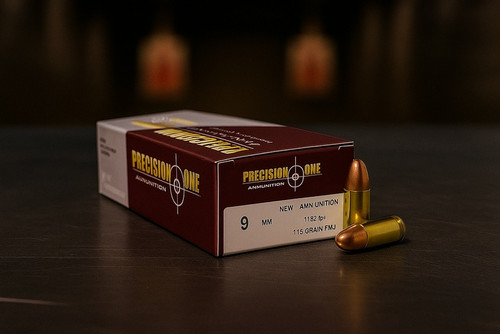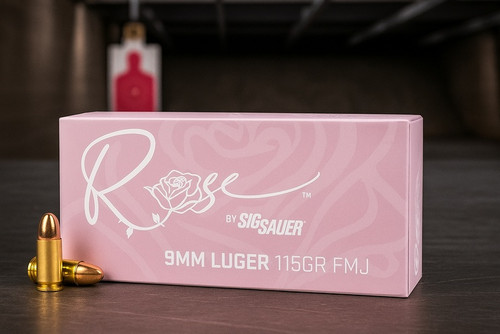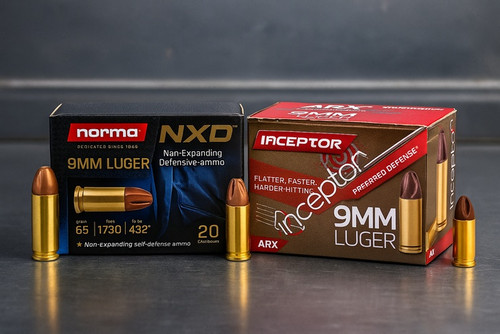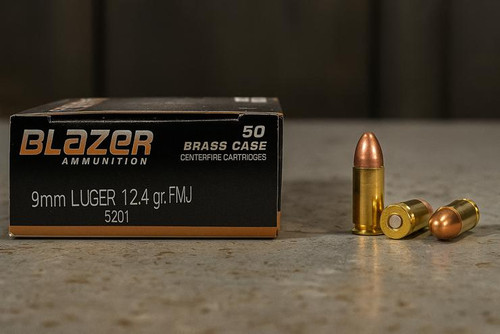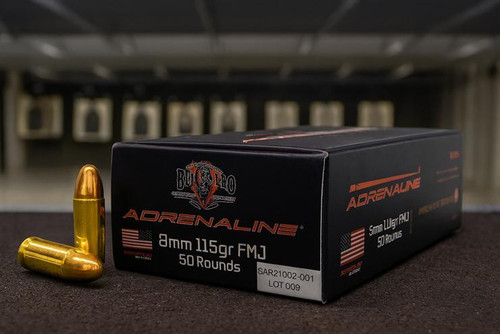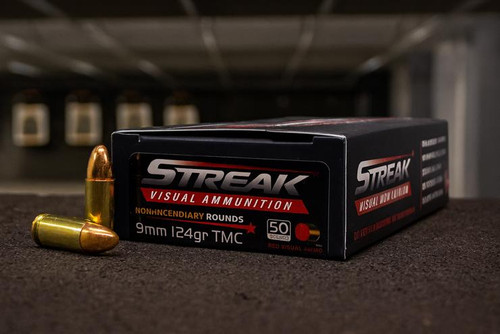We tested five solid EDC flashlights across different needs. The Surefire Stiletto Pro II comes out on top with an aluminum body and 1,500 lumens of power. If you’re on a budget, the Streamlight ProTac 1L-1AA is a great choice—it runs on two common battery types and costs under $50. Each light in this list fits a unique purpose, from pocket carry to max brightness.
Key Takeaways
- Surefire Stiletto Pro II leads with 1,500 lumens and 35,000 candela.
- Coast Slayer offers a slim shape with five brightness levels.
- Streamlight Wedge XT is the easiest to pocket.
- Fenix PD36R Pro runs up to 42 hours and gives the best value.
- Streamlight ProTac 1L-1AA runs on CR123 or AA batteries.
One night during training, our main gear failed in complete darkness. My small flashlight was the only thing that kept my team moving. That little beam guided us through rough ground and back to safety. That night showed me why a good light is not only just handy but it can be the tool that keeps you alive.
The Quick List – Best Everyday Carry Flashlights (EDC)
Finding the right EDC light means balancing size, power, and battery life. After digging deep, these five stood out:
- Surefire Stiletto Pro II - Best Overall
- Coast Slayer - Most Adaptable
- Streamlight Wedge XT - Most Compact
- Fenix PD36R Pro - Best Value
- Streamlight ProTac 1L-1AA - Best Budget
EDC Flashlight Comparison Chart
| Model | Maximum Lumens | Maximum Candela | Battery | Maximum Run Time | Weight | Length |
|---|---|---|---|---|---|---|
| Surefire Stiletto Pro II | 1,500 | 35,000 | Rechargeable (USB-C) | 23.5 hrs | 5 oz | 4.87″ |
| Coast Slayer | 1,150 | N/A | Rechargeable (USB-C) | 11 hrs | 3.2 oz | 5.5″ |
| Streamlight Wedge XT | 500 | N/A | Rechargeable (USB-C) | 11 hrs | 2.6 oz | 4.25″ |
| Fenix PD36R Pro | 2,800 | N/A | Rechargeable (USB-C) | 42 hrs | 6 oz | 5.74″ |
| Streamlight ProTac 1L-1AA | 350 | 6,400 | CR123A, AA | 14 hrs | 2.8 oz | 4.25″ |
How We Chose the Best EDC Flashlights
Making a flashlight is easy. Building one that survives daily use is not. For this list, we stuck with trusted brands that have long records in defense, law, and outdoor use.
Good EDC lights do more than just shine bright. They must balance beam throw with runtime, offer simple battery options, and fit in a size you’ll carry every day. As the saying goes, it gets dark every day, so the best flashlight is the one you actually have with you.
Each light here is the top pick for a certain type of user. It ranges from budget shoppers to those who want max performance.
Best Everyday Carry Flashlights
Fenix PD36R Pro – Best Value
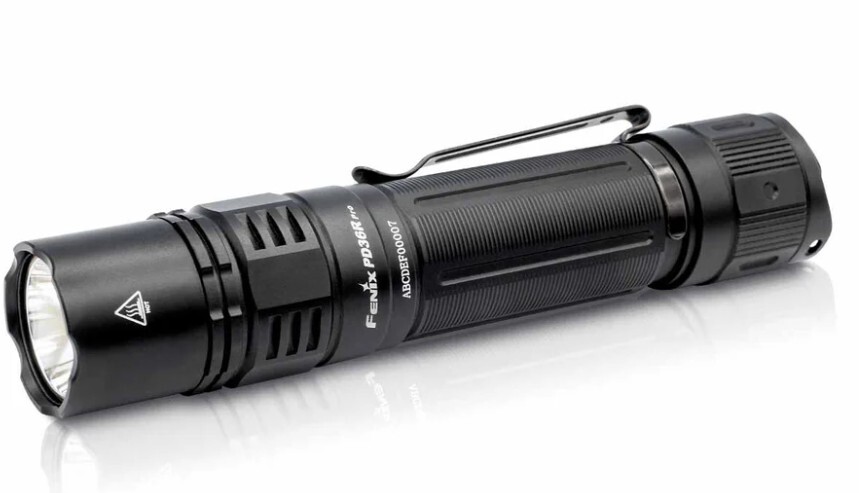
The Fenix PD36R Pro got major updates in 2024 and became one of the strongest values in EDC flashlights. It mixes powerful output with long battery life and still slips into a bag or larger pocket.
Its big edge is flexibility. You get a USB-C rechargeable battery that you can swap if needed. That means no downtime. Rated IPX8, it can handle full water submersion. Dual tail switches make it easy to use with gloves or in stressful moments.
Price: Around $119
Specs
- Output: 2,800 lumens (max), 2,500 (strobe), 1,000, 350, 150, 30 lumens
- Battery: USB-C rechargeable, swappable
- Run Time: Up to 42 hours on lowest
- Weight: 6 oz
- Length: 5.74″
Features
- Five brightness levels plus strobe
- Hot-swappable battery system
- IP68 waterproof rating
- Dual tail switches for control
- Remote pressure switch ready
Pros
- Excellent battery life (42 hours on low)
- Extra batteries keep it running
- Can mount as a weapon light
- Rugged aluminum build
Cons
- Too large for slim pocket carry
- Heavier than compact lights
Streamlight ProTac 1L-1AA – Best Budget
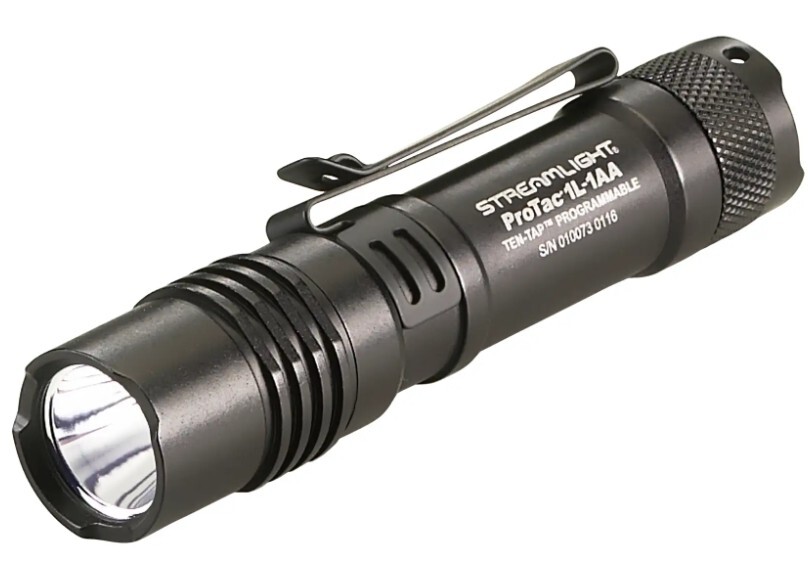
The Streamlight ProTac 1L-1AA proves you don’t need to overspend for a reliable tool. This small light has kept its place for years because it blends low cost with real usefulness.
Its best trait is flexibility. It runs on either CR123 or AA batteries, so you’ll always find a power source. At 4.25 inches and under 3 ounces, it disappears in your pocket. The single-button tail switch works well even with gloves. The two-way clip even lets you mount it on a hat brim for hands-free use.
Price: Around $48
Specs
- Output: 350 lumens (high), 40 lumens (low), strobe
- Battery: CR123, AA lithium, or AA alkaline
- Run Time: CR123A – 350 lumens 1.5 hrs (High), 40 lumens 14 hrs (Low); AA lithium – 150 lumens 4.25 hrs; AA alkaline – 40 lumens 7 hrs.
- Weight: 2.8 oz
- Length: 4.25″
Features
- Multi-battery compatibility
- Emergency strobe mode
- Two-way pocket clip
- Single-button tail switch
- Aluminum body
Pros
- Affordable price
- Wide battery flexibility
- Light and easy to carry
- Trusted design
Cons
- Lower brightness than high-end picks
- Fewer advanced features
Surefire Stiletto Pro II – Best Overall
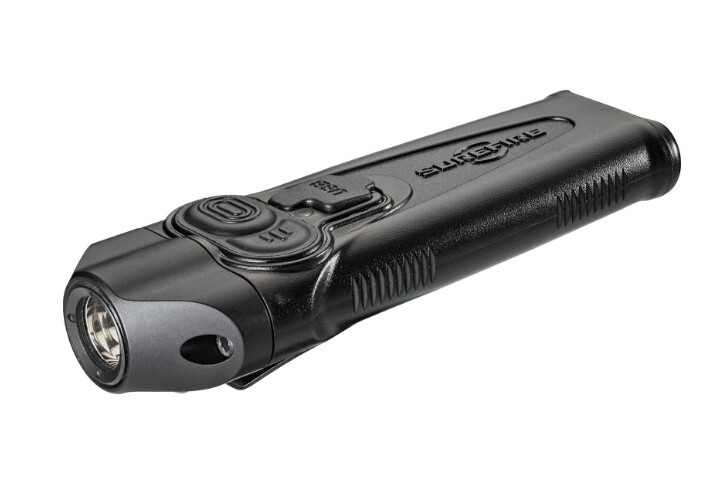
The Surefire Stiletto Pro II takes a proven design and improves it across the board. It fixes the small issues of the first version and ramps up performance.
USB-C charging replaces micro-USB and so it cuts charge times. Surefire upgraded the LED with multiple modes, bumping output to 1,500 lumens and candela to 35,000. That means a brighter beam with much more distance. The aluminum body is IPX7 waterproof, and programmable buttons let you set up the controls how you like.
Price: Around $233–$339
Specs
- Output: 1,500 lumens (high), 500 (medium), 25 (low)
- Candela: 35,000
- Battery: USB-C rechargeable
- Run Time: 1 hr (high), 1.5 hrs (medium), 23.5 hrs (low)
- Weight: 5 oz
- Length: 4.87″
Features
- Programmable buttons
- Dual LED setup
- IPX7 waterproof aluminum housing
- Battery status light
- Reversible clip
Pros
- Excellent build quality
- Very bright with long beam throw
- Fast USB-C charging
- Adjustable operation
Cons
- High price
- More than casual users need
Coast Slayer – Most Adaptable
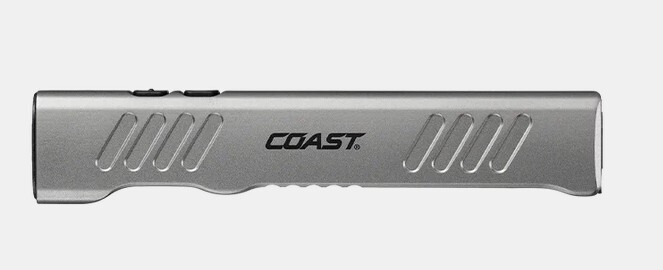
The Coast Slayer turned heads when it debuted with its flat design and multiple light modes. It combines slim carry with strong function.
You get modes ranging from a 1,150-lumen turbo blast down to a 42-lumen saver. Its flat body is about the size of a phone with a case, so it slips into a pocket without bulk. The programmable switch and charge light make it user-friendly. With an IPX7 waterproof rating and an aluminum frame, it holds up in bad conditions.
Price: Around $79
Specs
- Output: 1,150 (turbo), 540, 380, 205, 42 lumens
- Battery: USB-C rechargeable
- Run Time: Up to 11 hours (low)
- Weight: 3.2 oz
- Length: 5.5″
Features
- Programmable switch
- Slim flat body
- Charge level light
- Removable clip
- IPX7 waterproof build
Pros
- Many brightness settings
- Slim, pocket-friendly shape
- Modern design and function
- Charges in about two hours
Cons
- Longer than some lights
- No candela rating listed
Streamlight Wedge XT – Most Compact
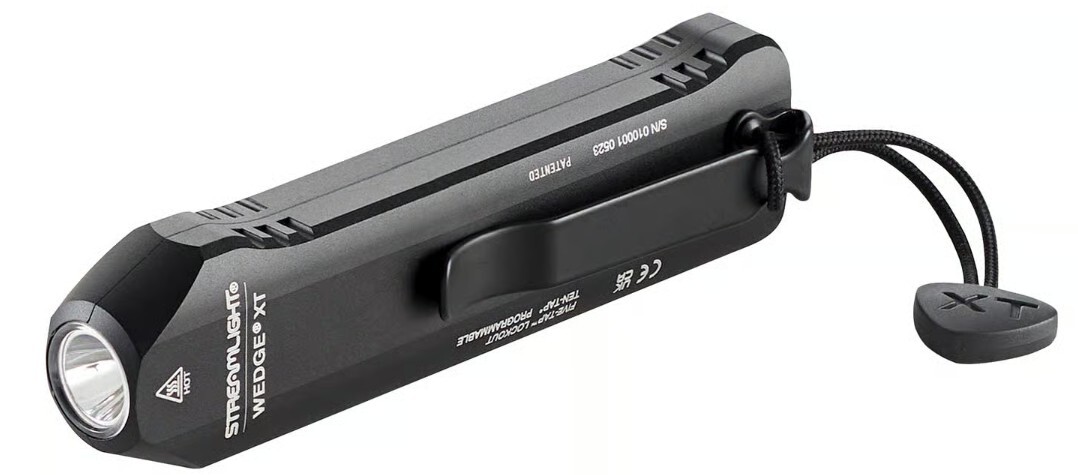
The Streamlight Wedge XT takes the original Wedge idea and trims it down into an even more pocket-ready light. By shaving off more than an inch in length, Streamlight built one of the easiest-to-carry EDC flashlights out there.
The Wedge XT keeps things simple and comfortable. Just two brightness levels and a single button to run it. Its slim shape slips into a pocket and stays out of the way. At only 2.6 ounces, you’ll barely feel it’s there. It’s not meant for tactical duty or blasting out massive light beams. But for daily use and quick tasks where size matters, it’s hard to top.
Price: Around $84
Specs
- Output: 500 lumens (high), 50 lumens (low)
- Candela: 1,900
- Battery: Rechargeable USB-C
- Run Time: 2 hrs (high), 11 hrs (low)
- Weight: 2.6 oz
- Length: 4.25″
Features
- Ultra-slim, pocket-ready build
- Simple two-level brightness
- USB-C rechargeable battery
- Button at the end for easy use
- Rugged anodized aluminum body
Pros
- Compact and light for true pocket carry
- Easy, no-fuss controls
- Great for everyday use
- Clean, modern look
Cons
- Not as bright as larger lights
- Fewer modes than tactical models
How to Choose the Best Everyday Carry Flashlight (EDC)
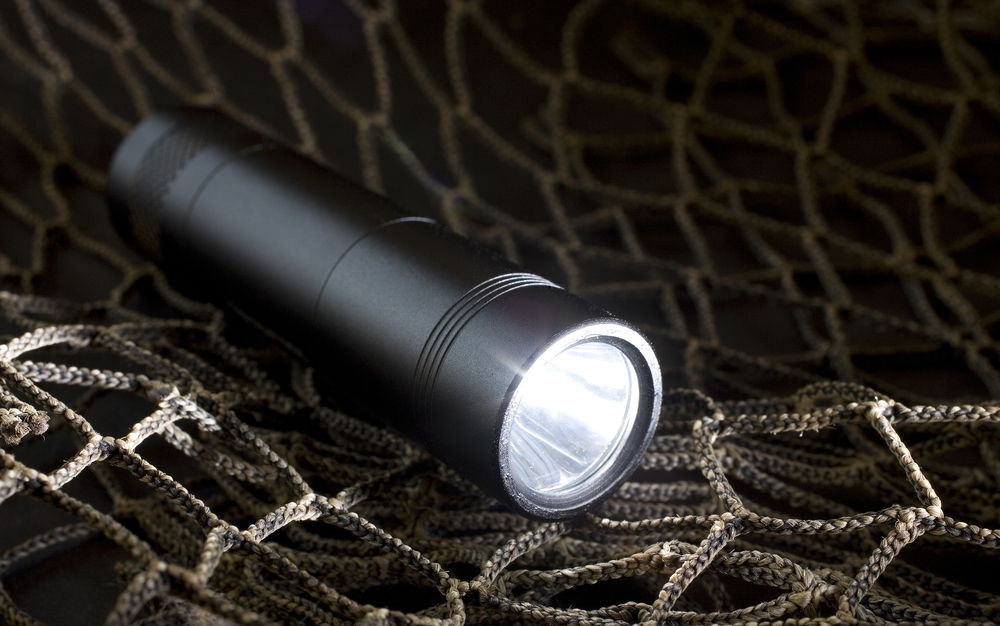
Power Output – Lumens vs. Candela
When picking a flashlight, you’ll often see two numbers: lumens and candela. Lumens show total light — how bright it looks nearby. Candela shows how focused the beam is at the center and how far it throws light.
A high-lumen light with lower candela gives you a wide, soft beam for close-up use. A light with higher candela and fewer lumens throws light farther but is more focused. For daily carry, around 300–800 lumens with solid candela usually covers most jobs.
The idea that “brighter is always better” often pushes people into buying lights they can’t actually use. Having a lower brightness option saves you from blinding yourself when checking under a bed or reading in the dark. That’s why good EDC flashlights give you multiple modes.
Battery Types – Rechargeable vs. Disposable
Batteries come down to convenience versus always-ready power. Rechargeable lights save you money over time and cut down waste, but you need to plug them in often. USB-C charging makes this quicker than older ports.
Disposable battery lights let you pop in fresh power instantly, which is great for emergency kits or places where charging isn’t possible. Some flashlights, like the Streamlight ProTac 1L-1AA, can run on more than one battery type. That gives you options when supplies run low.
Some of the best models, like the Fenix PD36R Pro, mix both. They use a rechargeable cell you can replace fast if needed. This gives you the savings of rechargeable power and the security of swapping in a spare when it counts.
Size and Carry Options
How you carry a light matters as much as the light itself. True pocket carry means compact size, light weight, and a strong clip. That’s where lights like the Streamlight Wedge XT and ProTac 1L-1AA shine.
Bigger models, like the Fenix PD36R Pro, give you more output but are better for bags, cars, or jackets. Common carry methods include:
- Pocket clip: Fits to pants or belts
- Keychain: Works for tiny lights you keep with keys
- Belt holster: Often included with larger lights
- Bag carry: Works for any light, but you need quick access
The “best” EDC flashlight is simply the one you’ll actually carry. Pick the size and style that fits your routine.
Features to Look For
Extra features can make an EDC flashlight much more useful:
- Water resistance: IPX7 or IPX8 ratings protect against heavy rain or submersion
- Impact resistance: Should survive a drop from at least 1 meter
- Memory mode: Turns on at the last brightness setting
- Momentary-on: Quick light without a full click
- Lockout: Stops it from turning on in your pocket
- Custom modes: Lets you set brightness patterns to match your needs
Self-defense professionals at Tulster note that features such as magnetic bases, programmable interfaces, and tactical strobes serve specialized purposes but aren't necessary for most daily situations.
When deciding between compact EDC lights, pay attention to beam profile, mode memory, and ruggedness—if you’re considering a more mission-ready option, check our best tactical flashlights guide for lights with higher output, strike bezels, and advanced mode sets.
Why Trust Pro Armory's Review
Our reviews come from a team with deep backgrounds in the military, as shooting instructors, and running gun shops. We’ve carried these lights in tough places and that ranges from combat zones to daily civilian carry.
We balance hands-on experience with detailed technical research. That means looking past marketing claims to see how lights really perform in real-world use. We keep up with industry updates through ongoing training and direct work with makers and instructors.
We also don't let ads or free gear sway us. Every recommendation is based on performance. As tactical experts at Shooting Illustrated emphasize, a "quality high-lumen, high-candela handheld light" can be a crucial tool for personal safety and everyday utility.
Final Thoughts
An EDC flashlight deserves just as much thought as any other piece of everyday gear. The right one becomes part of your daily routine and could make a big difference in an emergency. It gets dark every day and that’s reason enough to carry one.
For many, the Surefire Stiletto Pro II is the top choice. It offers high performance that matches its premium price. For tighter budgets, the Streamlight ProTac 1L-1AA delivers solid value and all the basics you need.
In the end, everyday carry is personal. The right flashlight depends on your job, your environment, and your habits. Pick the one that fits your life and you’ll never be caught in the dark.
Frequently Asked Questions (FAQs)
1. What's the difference between lumens and candela?
Lumens measure brightness overall. Candela shows beam strength and throw distance. A good EDC flashlight balances both.
2. What flashlight brightness is best for everyday carry?
Around 300–500 lumens works well for daily use. A low mode (5–50 lumens) helps in close-up tasks.
3. Are rechargeable flashlights better than battery-powered ones?
Rechargeables save money and cut waste. Battery-powered ones are great in emergencies when charging isn’t possible.
4. Can EDC flashlights be used for self-defense?
Yes. A bright light can stun someone for a moment and help you spot danger. Many training courses cover flashlight self-defense.
5. What is the most compact EDC flashlight?
The Streamlight Wedge XT is one of the smallest at 4.25 inches and just 2.6 ounces.
6. How much should you spend on an EDC flashlight?
Good EDC flashlights cost between $40 and $350. Around $50 gets you solid basics, while premium models add advanced features.
About the Author
This article was written by the Pro Armory writing team using current research, including insights from sources like the Journal of Military Science, Firearms News, and the National Shooting Sports Foundation. We also used trusted info from defense publications and firearm authorities such as the ATF, NRA, and maker manuals.
Disclaimer: This article is for learning and information only. Pro Armory makes no promises about results or accuracy. Use at your own risk. Always follow maker guidelines, local laws, and safety steps when using any gear mentioned here.




 Pro Armory Editorial Team
Pro Armory Editorial Team